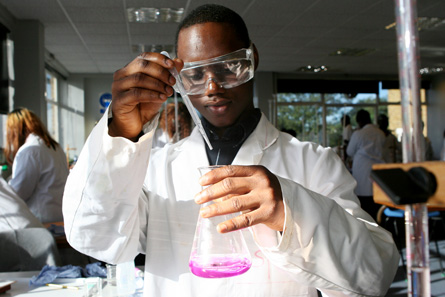Module 3
1. Module 3
1.7. Lesson 2
Module 3—The Male and Female Reproductive Systems
Lesson 2—the Human Female Reproductive System
 Get Focused
Get Focused

© Laurence Gough/shutterstock
In Lesson 1 you learned about the important role the male reproductive system plays in the continuation of the human species. While he is a vital contributor to reproduction, the male cannot reproduce by himself. To understand how the human species is perpetuated, it is vital to understand the other half of the equation—the structures and functions of the female reproductive system. It is the female reproductive system that forms, develops, and delivers a new human organism to functional independence as a newborn baby. This is a complex process that requires all parts of the female system to work in synchronicity.
During puberty, the female reproductive system undergoes many changes, such as menarche, the start of menstruation. Menstrual cramps, mild to severe pressure or pain experienced in the abdominal and pelvic areas, are an unpleasant symptom of menstruation for many young women.
menarche: a female’s first menstrual cycle
menstruation: the monthly shedding of the endometrial lining
dysmenorrhea: severe menstrual cramps
Estimates suggest that 50% of women suffer from cramping, with up to 15% of these women defining their menstrual cramps as severe. The medical term for painful menstrual cramps is dysmenorrhea. Women who have chronic cramping may or may not have trouble with fertility.
In addition to the pain experienced in the abdomen and pelvis, menstrual cramps can be associated with one or more of the following ailments: headaches, nausea, vomiting, constipation, or diarrhea. You may have seen advertisements for over-the-counter medication to help alleviate some of these symptoms.

© 2008 Jupiterimages Corporation
Update: A Fertility Case Study
Maria, from the second couple introduced in the Unit B “A Fertility Case Study,” suffers from dysmenorrhea. Her condition developed over eight months when she was 14 years old. By the time she was 15 years old, Maria was unable to function normally during her menstrual cycle. To manage the pain of severe cramps, Maria, with her mother’s guidance and supervision, tried several over-the-counter pain medications. These medications provided less and less pain relief as time went on.
To learn more about the female reproductive system and the different treatment options available for dysmenorrhea, Maria and her mother went to their local sexual health centre. They wanted to make sure they understood the decisions they were making and the effects those decisions would have on Maria’s long-term reproductive health. You can learn more about Maria’s condition using the term(s) “dysmenorrhea” or “severe menstrual cramps” in an Internet search.
In Lesson 2 you will investigate the female reproductive system and many issues that affect female fertility.
You will investigate the following focusing questions:
-
What are the essential structures and functions of the female reproductive system?
-
How do these structures support continuity of the human species?
-
What is the functional unit of the female reproductive system?
 Module 3: Lesson 2 Assignment
Module 3: Lesson 2 Assignment
Download a copy of the Module 3: Lesson 2 Assignment to your computer now. You will receive further instructions about how to complete this assignment later in the lesson.
You must decide what to do with the questions that are not marked by the teacher.
Remember that these questions provide you with the practice and feedback that you need to successfully complete this course. You should respond to all of the questions and place those answers in your course folder.
During this lesson you will continue the Unit B Assessment project, “A Fertility Case Study.” In addition to your lesson work, store any information about the infertile couples you learn about, specifically information about Sarah, in your course folder for your teacher’s feedback.
While you are completing this lesson, there will be many opportunities for you to acquire, understand, and practise the concepts that are presented to you. As you complete these activities, as well as your summary notes, you will file everything in your course folder to reference when you are preparing for exams.
Remember that you also have the option of trying additional questions from the textbook for further practice. Consult with your teacher for the answers to these questions. The Key will also provide you with many Diploma Exam-style multiple-choice, numerical-response, and written-response questions that will be an excellent review of the module. Practising your responses to these types of questions is good preparation for the Diploma Exam.